Faux wood blinds, a popular choice for window coverings, are durable, affordable, and resemble real wood. While their design versatility is commendable, you may wonder, “Is it possible to paint faux wood blinds?” Perhaps your home’s color palette has changed or you simply wish to refresh the look of your blinds. This piece explores painting faux wood blinds, providing insights into the process and key factors to consider.
How to Paint Wooden Window Blinds?
Painting faux wood blinds can rejuvenate your home decor with an easy DIY project that anyone can handle. Here’s a guide to achieving the best results:
Remove Slats
Before you begin the process of painting, the first step is to carefully remove the slats from the blinds.

Start by fully extending the blinds and untying the strings that hold the slats together. Once you have untied the strings, gently slide each slat out one by one. Be sure to keep all hardware and strings in a safe place for reassembly later. After removing, wipe each slat with a damp cloth to remove dust or dirt. A clean surface is necessary for proper paint adhesion.
Clean the Slats
Properly cleaning the slats is a crucial and indispensable part of the process when painting faux wood blinds. Begin by filling a spacious tub or basin with warm water and a gentle detergent. Fully immerse each slat in the soapy water and gently scrub using a soft brush to remove any stubborn grime or stains. After scrubbing, rinse the slats thoroughly under running water to wash off the soap. Lay the slats out on a clean towel and pat them dry. Make sure the slats are fully dry before moving on. Any remaining moisture can affect the painting process. [1]
Primer the Blinds
Priming the blinds is a key stage in the painting process. It creates a smooth, uniform surface that allows the paint to adhere better, and it helps mask any existing color or stains on the blinds. Start by selecting a primer suitable for faux wood surfaces. Lay the slats out on a drop cloth or old newspaper to protect your workspace. With a fine bristle paintbrush, apply a thin, even coat of primer to each slat, ensuring complete coverage on all sides. Allow the primer to dry completely, following the manufacturer’s instructions for drying time. It is of utmost importance to avoid rushing through this step. The primer needs to be completely dry before starting the painting process.
Paint the Slats Carefully
The final step is painting the slats. Choose a high-quality paint for faux wood surfaces that complements your home’s decor. Using a clean, fine bristle brush, carefully apply an even coat of paint to each slat, ensuring you cover all sides and edges.
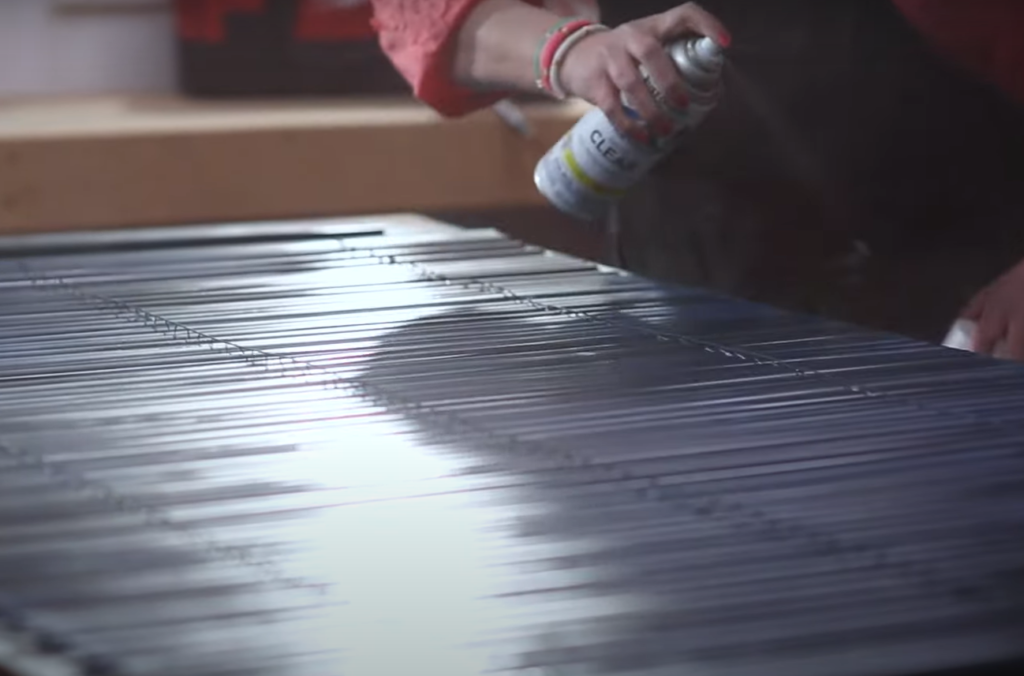
For a smoother, more professional finish, apply multiple thin coats instead of one thick coat. Let each coat dry completely before applying the next, following the manufacturer’s recommended drying times. Remember, patience is key. Rushing may lead to uneven coverage or visible brush strokes. After the final coat of paint has dried, you can proceed to reassemble and hang your freshly painted faux wood blinds. [2]
Bring the Slats Back to Their Place
The reinstallation of the slats marks the concluding stage in the process of revitalizing your faux wood blinds with a brand new layer of paint. Start by threading the strings back through the holes in each slat, ensuring they are in the same order as before.
Once all the slats are rethreaded, retie the strings at the bottom. Test the blinds to ensure they open and close smoothly. If everything’s good, your revamped faux wood blinds are ready to proudly adorn your windows, enhancing the aesthetics of your room with their fresh, new color.Do the Leftover Adjustments
After reinstalling, you may need to make adjustments for proper functionality and appearance of your faux wood blinds. Start by checking the length of the blinds. If they are too long, you can remove excess slats from the bottom. Simply untie the string, remove the additional slats, and then retie the string. If you observe any difficulties in the smooth opening or closing of the blinds, it may be necessary to apply lubricant to the mechanism to remedy the situation. A silicone-based lubricant is ideal for this purpose. Finally, if you find any small, noticeable paint spots you missed or touched-up areas where the paint appears uneven, you can always apply a small touch-up coat with a fine brush.
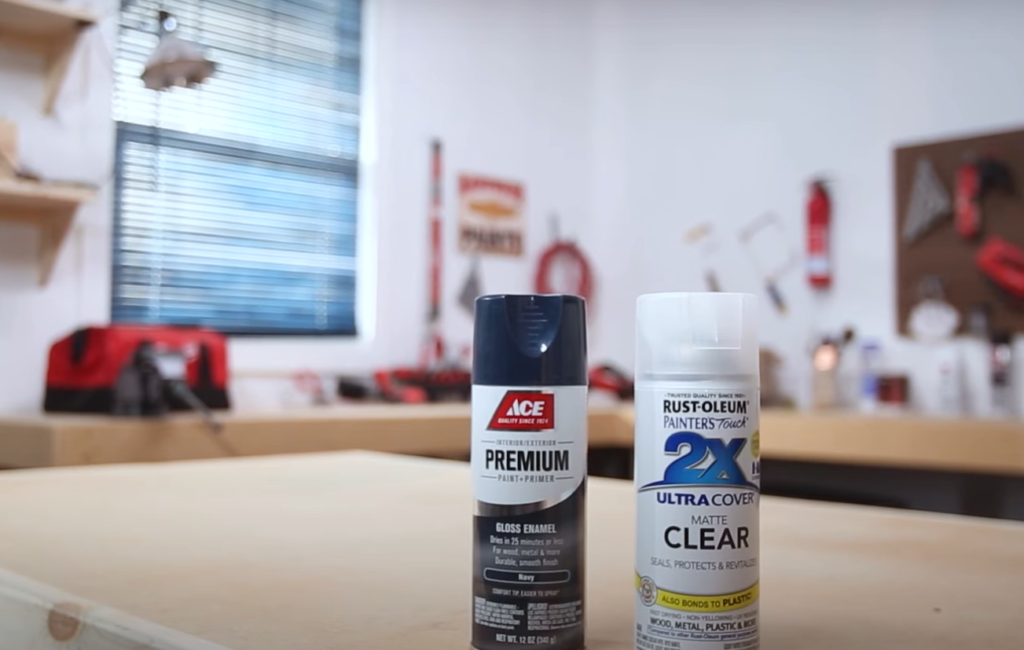
Make sure to allow it sufficient time to completely dry before readjusting the blinds once more. [3]
Tips for Painting Faux Wood Blinds
- Choose the Right Paint: It’s essential to select a paint that’s suitable for faux wood surfaces. Acrylic latex paint is an excellent option as it adheres effectively to faux wood surfaces and offers a vast array of color choices.
- Use Quality Brushes: For optimal outcomes, employ a brush of superior quality. A fine bristle brush is perfect for this type of project. It can smoothly apply the paint and reach all the nooks and crannies of the blinds.
- Ventilation is Key: Always ensure that you’re painting in a well-ventilated area. Not only does this expedite the drying process of the paint and primer, but it also safeguards you from inhaling any potentially noxious fumes.
- Don’t Rush: Patience is crucial in a painting project. Make sure each coat of primer and paint is completely dry before applying the next. This leads to a smoother, more professional finish.
- Test Color: Before painting all the slats, test your chosen paint color on a single slat to ensure it matches your expectations and complements your interior decor.
- Keep the Workspace Clean: Cover your workspace with a drop cloth or old newspaper to protect it from paint splatters and spills.
- Clean Up Immediately: If there are any spills or drips, clean up immediately with a damp cloth. This prevents the paint from drying and becoming more difficult to remove later. [4]
How Often to Clean and Paint Wood Blinds?
Clean faux wood blinds every three to six months to prevent dust and grime buildup. The frequency of cleaning may vary depending on your household’s environment, for instance you might need to clean more often if you have pets or smokers in the house. As for painting, it’s a less frequent task.
Generally, a fresh coat of paint every five to seven years can keep your blinds looking vibrant and new. However, if you notice noticeable fading, chipping, or discoloration before this time, you may want to paint them sooner.Can You Put Varnish or Oil to Your Wooden Blinds?
Faux wood blinds can be treated with varnish or oil, similar to real wood. However, it’s important to consider a few factors before doing so. Varnish can provide a glossy finish, enhancing the aesthetic appeal of the blinds and offering some degree of protection. Oil treatment, on the other hand, can help to maintain the flexibility of the faux wood material, preventing it from becoming brittle over time.
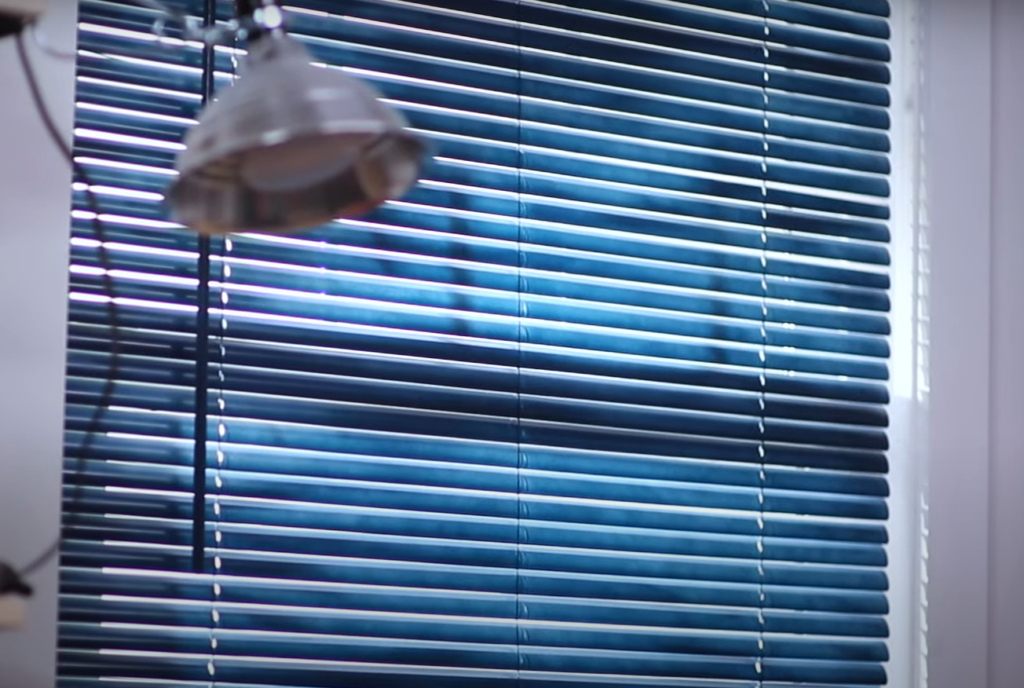
It’s important, though, to choose products that are specifically designed for use with faux wood materials as using the wrong type of varnish or oil could potentially damage the blinds. Always perform a patch test on an unobtrusive area of the blinds before full application, and follow the manufacturer’s instructions for use. [5]
FAQ
What are the disadvantages of faux wood blinds?
Although faux wood blinds offer numerous benefits, they do come with a few drawbacks.
- Heavier than Real Wood: Faux wood blinds are typically more weighty compared to authentic wooden blinds.
- Limited Customization: Faux wood blinds typically offer a narrower selection of colors and finishes in comparison to authentic wood blinds.
- Less Resistant to Extreme Temperatures: Faux wood blinds resist moisture better than real wood, but they may warp or crack in extreme temperatures, making them unsuitable for very hot or cold environments.
- Not Eco-friendly: Faux wood blinds, crafted from PVC, a plastic material, are not as environmentally friendly as their natural wood counterparts.
How do you change the color of wooden blinds?
Changing the color of wooden blinds is a straightforward process, albeit one that requires some time and patience. Here are the steps to follow:
- Remove the Blinds: Begin by carefully removing the blinds from the window.
- Clean the Blinds: To effectively clean the blinds, gently wipe away dust and debris using a damp cloth.
- Sand the Blinds: Use fine-grain sandpaper to lightly sand the blinds.
- Apply Primer: Apply a coat of primer to help the paint stick to the blinds and ensure a smooth and even finish.
- Paint the Blinds: After allowing the primer to dry, proceed to apply your desired paint color with either a brush or a sponge. It’s best to paint in the direction of the wood grain for the best results.
- Let Them Dry: Ensure that the blinds are fully dry before reattaching them.
Can you paint indoor blinds?
Absolutely, indoor blinds can be painted. Painting your interior decor can breathe new life into it, whether you have wooden, faux wood, or metal pieces. Get ready to enjoy a fresh and rejuvenated look and feel for your space.
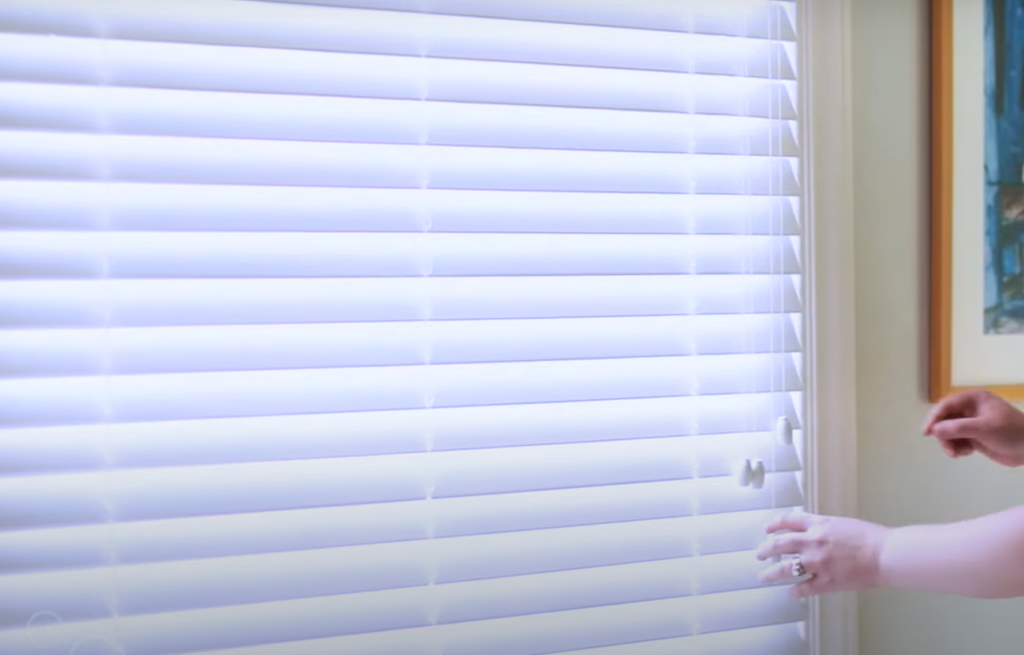
The process is similar to the one outlined above for wooden blinds. Ensure that the blinds are clean, dry, and lightly sanded if necessary before applying a primer. After allowing the primer to dry completely, you may proceed with applying the paint color of your choice. For metal blinds, use acrylic enamel paint for the best results. Make sure to let each coat of paint fully dry before applying the next to avoid streaks or uneven color.
How do you make wooden blinds look new?
You can bring back the beautiful look of your wooden blinds by following a set of steps that will restore them to their former glory.
- Thorough Cleaning: First, remove the dust and grime that has accumulated over time. To effectively clean the slats, you can utilize either a microfiber cloth or a vacuum equipped with a brush attachment. To remove stubborn dirt, use a damp cloth with mild soap, but test on a hidden area first.
- Repair Damage: Check the blinds for any damage. If there are broken slats, they can often be replaced. Similarly, if the cord is frayed or broken, replacement cord kits are available.
- Re-Stain or Paint: If the color of your blinds has faded, consider re-staining or painting them. Lightly sand the slats, apply a primer (if painting), and then apply your chosen stain or paint color. Remember to follow the grain of the wood.
- Polish: Once your blinds are clean and dry, finish off with some wood polish. This will not only make them shine but also provide a protective layer against dust and grime.
- Regular Maintenance: Keep your blinds looking new by cleaning them regularly. This prevents dust and dirt from building up and keeps them looking their best.
Should you remove blinds before painting?
Yes, it is typically recommended to remove blinds before painting. This is to ensure that you do not accidentally get paint on your blinds during the process. Removing them also allows you to clean and inspect the blinds for any damage or needed repairs. Additionally, it allows for better access to the window frame, enabling you to paint more precisely and efficiently.


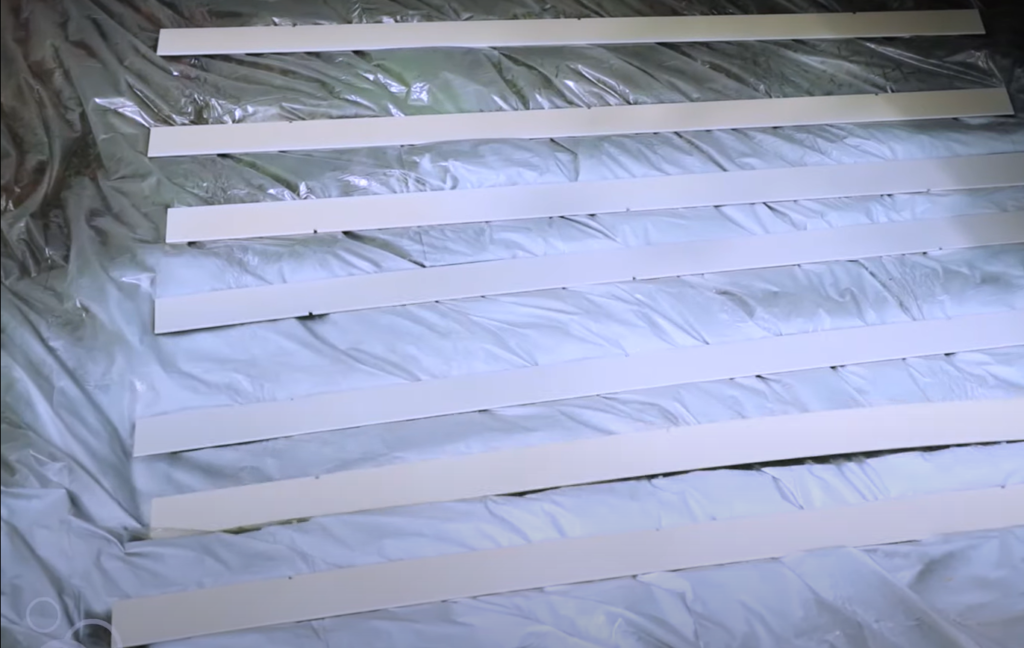
If you’re painting the blinds themselves, removing them also allows for a more even coat and lets you reach all parts of the blinds easily.
How long do faux wood blinds last?
Faux wood blinds are known for their durability and can last for many years with proper care. The exact lifespan can vary based on factors such as the quality of the blinds, the environmental conditions they are exposed to, and how well they are maintained. On average, faux wood blinds can last anywhere from 5 to 10 years. Higher-end models, especially those treated to resist UV rays and prevent warping, can even last up to 15 years or more. Regular cleaning and occasional repairs can extend the lifespan of your faux wood blinds, making them a long-lasting choice for window treatments.
Do faux wood blinds last?
Yes, faux wood blinds are renowned for their longevity and durability. Manufactured from synthetic materials, these blinds are resistant to moisture, sunlight, and wear and tear, making them a practical choice for areas such as kitchens and bathrooms. With appropriate care, which includes regular cleaning and avoiding harsh chemical treatments, faux wood blinds can serve their purpose for many years. However, the exact lifespan can vary, affected by factors like the quality of the blinds and their exposure to harsh environmental conditions. Nevertheless, on average, you can expect faux wood blinds to last from 10 to 15 years, making them a cost-effective and long-lasting window treatment option.
How often should you replace faux wood blinds?
The frequency of replacing faux wood blinds largely depends on their quality, usage and maintenance.
However, high-quality blinds that are well-maintained and used sparingly can last up to 20 years. Signs that your blinds may need replacing include difficulty in operation, warped or bent slats, fading colors, and frayed cords. Regular cleaning, gentle handling, and timely minor repairs can significantly increase their lifespan. It is advisable to inspect your blinds annually for any signs of wear and tear, and consider replacing them if they no longer provide the desired light control, privacy, or aesthetic appeal.Why do faux wood blinds turn yellow?
Faux wood blinds can turn yellow over time due to several factors. The most common cause is prolonged exposure to sunlight. The ultraviolet (UV) rays in sunlight can cause the pigment in the faux wood material to degrade, leading to discoloration or yellowing. This effect is particularly pronounced in blinds that are not UV-resistant. Additionally, nicotine from cigarette smoke can also stain and yellow faux wood blinds. Regular cleaning can help prevent this discoloration, but once the blinds have yellowed, it can be challenging to restore them to their original color. For this reason, it’s crucial to consider the location and environmental conditions when choosing faux wood blinds, and opt for UV-resistant models if the blinds will be exposed to direct sunlight.
What is the best color for wooden blinds?
The best color for wooden blinds largely depends on the overall aesthetic and color scheme of your room. However, some popular choices include:
- Natural Wood Tones: These can range from light hues such as pine or oak, to darker shades like mahogany or walnut. Natural wood tones are versatile and can complement a variety of decor styles. They enhance a warm, inviting atmosphere and blend well with earthy color schemes.
- White or Off-White: These colors are classic choices for a clean, crisp look. They work well in modern or minimalist interiors and can make a room appear brighter and more spacious.
- Gray: Gray wooden blinds provide a contemporary, sophisticated look. They blend well with both bold and neutral color schemes, making them a versatile choice for any room.
- Black: Black wooden blinds can create a dramatic, stylish statement. They are ideal for modern or industrial-style interiors and pair well with bold color schemes.
Useful Video: How To Spray Paint Blinds – Ace Hardware
Conclusion
Faux wood blinds are a durable and cost-effective choice for window treatments. They offer the aesthetic appeal of natural wood while being resistant to moisture, sunlight, and wear and tear. With proper care and maintenance, they can last anywhere from 10 to 20 years. However, factors such as prolonged exposure to sunlight and nicotine from cigarette smoke can cause them to discolor or yellow over time. The color of the blinds should be chosen based on your room’s aesthetic and color scheme. Whether you prefer natural wood tones, classic white, contemporary gray, or dramatic black, the best choice is one that complements your home’s style and design.
References:
- https://theartofcottagemaking.com/how-to-paint-window-blinds/
- https://www.doityourself.com/stry/tips-for-painting-faux-wood-blinds
- https://www.thehandymansdaughter.com/give-sun-damaged-blinds-new-life-with-spray-paint/
- https://repaintnow.com/wooden-venetian-blinds/
- https://www.gemini-blinds.co.uk/news/how-to-paint-your-wooden-blinds/










Leave a Review